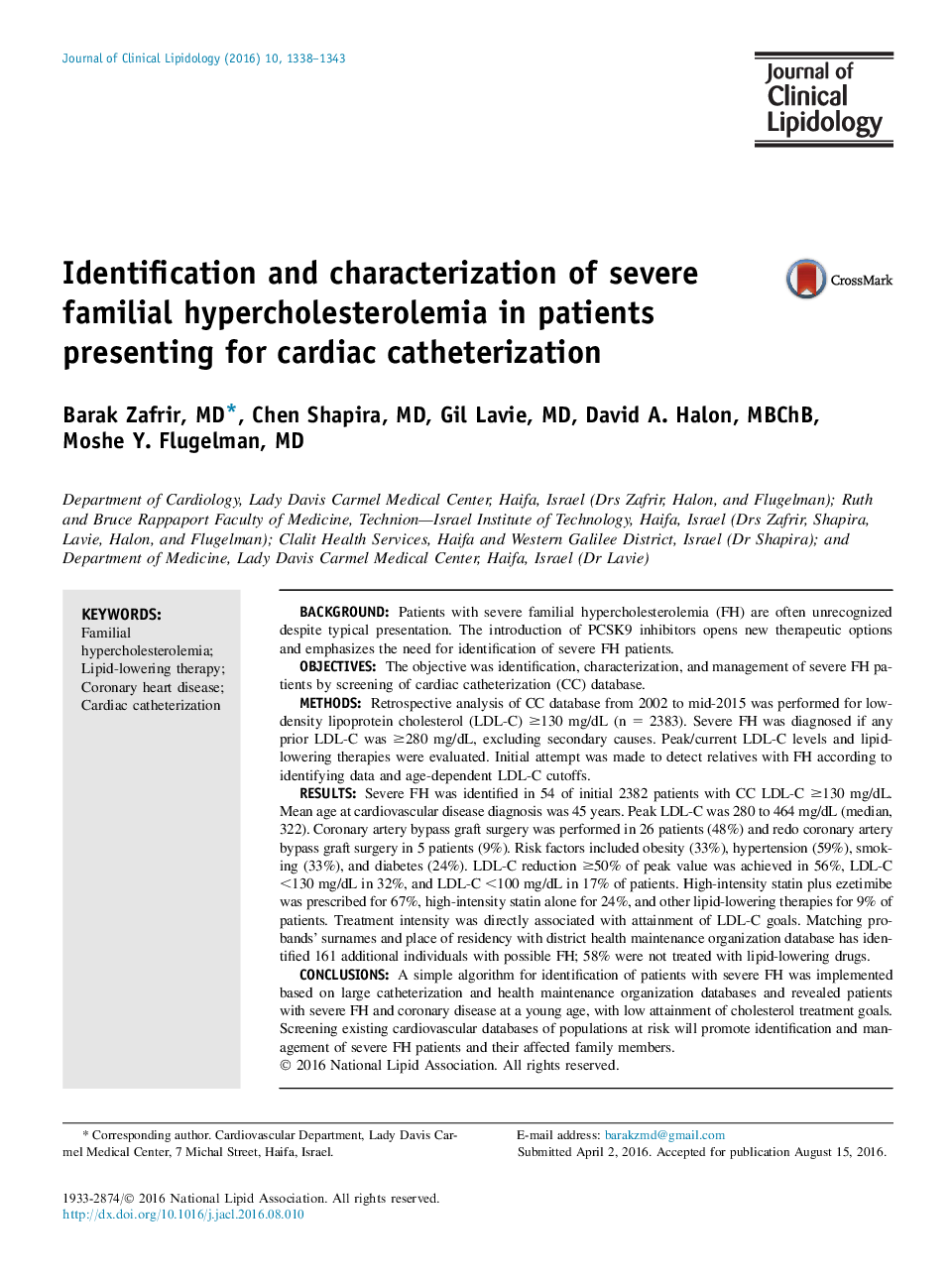| Article ID | Journal | Published Year | Pages | File Type |
|---|---|---|---|---|
| 5985112 | Journal of Clinical Lipidology | 2016 | 6 Pages |
â¢Screening cardiac catheterization database identified severe FH patients.â¢Severe FH was characterized by coronary disease and risk factors at young age.â¢Low attainment of therapeutic goals directly associated with treatment intensity.â¢Matching identifying data with HMO database promoted recognition of FH in relatives.
BackgroundPatients with severe familial hypercholesterolemia (FH) are often unrecognized despite typical presentation. The introduction of PCSK9 inhibitors opens new therapeutic options and emphasizes the need for identification of severe FH patients.ObjectivesThe objective was identification, characterization, and management of severe FH patients by screening of cardiac catheterization (CC) database.MethodsRetrospective analysis of CC database from 2002 to mid-2015 was performed for low-density lipoprotein cholesterol (LDL-C) â¥130 mg/dL (n = 2383). Severe FH was diagnosed if any prior LDL-C was â¥280 mg/dL, excluding secondary causes. Peak/current LDL-C levels and lipid-lowering therapies were evaluated. Initial attempt was made to detect relatives with FH according to identifying data and age-dependent LDL-C cutoffs.ResultsSevere FH was identified in 54 of initial 2382 patients with CC LDL-C â¥130 mg/dL. Mean age at cardiovascular disease diagnosis was 45 years. Peak LDL-C was 280 to 464 mg/dL (median, 322). Coronary artery bypass graft surgery was performed in 26 patients (48%) and redo coronary artery bypass graft surgery in 5 patients (9%). Risk factors included obesity (33%), hypertension (59%), smoking (33%), and diabetes (24%). LDL-C reduction â¥50% of peak value was achieved in 56%, LDL-C <130 mg/dL in 32%, and LDL-C <100 mg/dL in 17% of patients. High-intensity statin plus ezetimibe was prescribed for 67%, high-intensity statin alone for 24%, and other lipid-lowering therapies for 9% of patients. Treatment intensity was directly associated with attainment of LDL-C goals. Matching probands' surnames and place of residency with district health maintenance organization database has identified 161 additional individuals with possible FH; 58% were not treated with lipid-lowering drugs.ConclusionsA simple algorithm for identification of patients with severe FH was implemented based on large catheterization and health maintenance organization databases and revealed patients with severe FH and coronary disease at a young age, with low attainment of cholesterol treatment goals. Screening existing cardiovascular databases of populations at risk will promote identification and management of severe FH patients and their affected family members.
